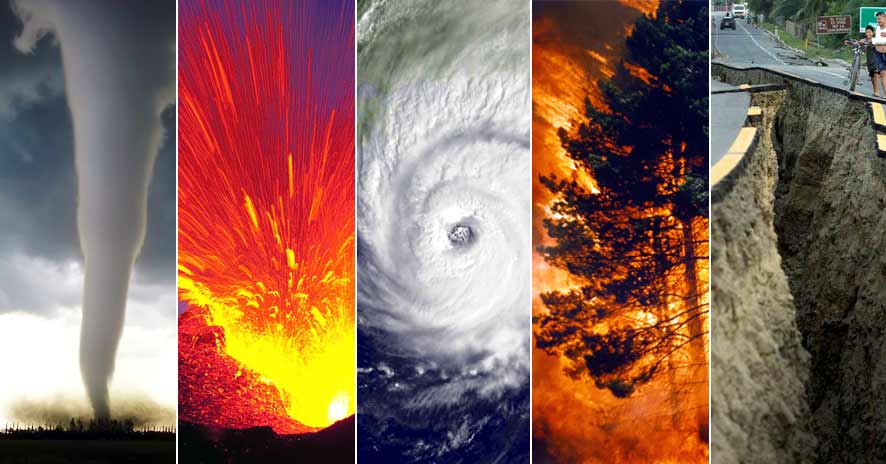Humans are exacerbating the environmental crisis and upending the delicate balance of ecosystems in more than one way. A new report explores our unhealthy relationship with nature and unpacks the consequences.
—
Rising temperatures and global warming have been in the news for a while and are well-supported by scientific evidence. Global atmospheric CO2 concentration exceeded 400ppm, the highest in human history and for the past 5 million years. Despite plateauing in the early 21st century, methane emissions have been on the rise since 2014 at rates not observed since the 1980s. The past four years have consequently been the warmest years on record.
You might also like: Current Emissions Commitments Not Enough to Meet Paris Targets- UN

What is far less known and publicised is the interaction between climate change and other man-derived environmental changes. A new, report – ‘Facing Up to the Age of Environmental Breakdown’– by the London-based Institute for Public Policy Research, is among the first meta-studies to consider the risks of interplay between multiple environmental threats in destabilising human society and socioeconomic systems.
What is the age of environmental breakdown?
The age of ‘environmental breakdown’ is characterised by the immense scale and severity of human impacts on the environment that extend beyond the dimension of climate change and exacerbate the environmental crisis.
More soil, rock and sediment each year are moved by humans than all natural processes combined. Enough concrete and plastic are produced to cover the entire Earth’s surface. Land use change and urbanisation are causing the sixth mass extinction with species extinction rates matching previous mass extinction events. Insect biodiversity and abundance are declining rapidly by 2.5% per year while vertebrate populations have declined by 60% over the past 30 years. Intensified agricultural production and deforestation have exposed 30% of the world’s arable land to significant degradation.
These environmental changes do not exist in isolation but instead interact with each other in complex, non-linear ways. Climate change serves to further destabilise the system by global changes in temperature, rainfall patterns and extreme events. Exceeding certain tipping points and biophysical thresholds would have catastrophic consequences. These interactions cascade into human society and amplify existing social and economic problems and risks global political and financial shocks.
Societal impacts range from heightened income inequality to forced migration with the rise of environmental refugees, increased conflict over scarce resources and declining human health and malnutrition.

In spite of the alarming statistics, the IPPR report concludes that the politicians and policies of the past decade have failed to provide adequate solutions to match the scale of the environmental destruction.
To effectively tackle what is surely the challenge of our generation, the paper envisages a fundamental rethink of existing social, economic and justice systems. Societies should strive for a ‘sustainable and just’ future by strengthening their resilience in order to cope with the age of environmental breakdown. A ‘shift in understanding’ is required.
Policies in recent years like the Climate Change Act in the United Kingdom, restoration of natural systems and deployment of renewable technology have the potential to be transformative, but progress has been slow. Climate action has been further hampered by rising populism, vested interests coupled with rigid and inflexible mechanisms for global decision-making.
The findings of this report echo recent debates over the Anthropocene. The Anthropocene is a proposed geological epoch in which human activity rivals that of natural geological processes in reshaping the Earth’s landscape. Prof. Simon Lewis, Professor of Global Change Science and researcher of the Anthropocene at University College London, suggested that ‘to usher in a new way of living, today’s core dynamic of ever-greater production and consumption of goods and resources must also be broken, coupled with a societal focus on environmental repair.’

The recent proposal of a Green New Deal (GND) in the United States attracted significant debate. It is a prime example of transformative policies that links environmental degradation with human society and considers the impacts of human activity beyond climate change. The GND does not only aim to cut carbon emissions by increasing uptake of renewable energy. It also pledges an all-encompassing social rethink: creating green jobs, raising the minimum wage, establishing universal healthcare; all backed by strong government intervenction in the economy. Similar proposals have recently been released by the Labour Party, the official opposition in the UK Parliament, in what was termed ‘The Green Transformation’.
Profound changes are needed in order for humans to live within sustainable limits and mitigate the environmental crisis. Widespread public concern and the naissance of youth climate strikes may be the catalyst for long overdue bold and transformative policies.


















